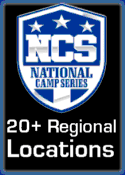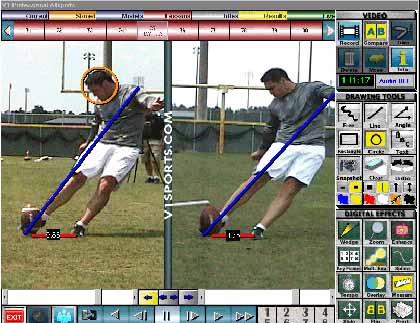|
GUEST EXPERT ARTICLE
Directional punting can be an unmatched weapon in the special teams game if executed effectively. If you want to separate yourself as a punter, you must have the ability to give your cover team the advantage by eliminating a returners ability to maneuver in the field. This is done by making your opponent catch the ball as close to the sideline as possible, or punting the ball out of bounds, to negate the returner all together. In close games, the team who wins the battle for field position will emerge victorious more often than not. Effective directional punting minimizes your opponents return yardage thus giving your team a decisive advantage.
Establishing a target line: In order to become an effective directional punter you must know where you want the ball to go. The ideal directional punt needs to have distance and accuracy, establishing the correct target line is crucial in achieving both. For high school punters start by cutting the field in to thirds, right, middle and left. Your target line should be over outside hip of the guard to what ever side you are directional punting to (ex. If you are directional punting right your target line will be over the outside hip of the right guard if the ball is spotted in the middle of the field). If executed properly the ball will land between the hash and the sideline. College and professional punters need to have more precise directional punting due to the higher caliber of athletes returning the ball. College and professional punters need to establish a target line that will allow their punts to land either on the numbers or between the numbers and the sideline. Because the hashes are closer to the middle of the field in college and in the pros you will have to adjust your target line in between the guard and tackle in order to get your punt to hit the numbers.
Stance: I teach my students to find their target line then take their stance. This way, they can be properly aligned to step down their target line. When establishing your target line you want your feet and hips to be square to the line of scrimmage. Once a target line is established, then move your feet but not your hips toward your target. When directional punting left keep your hips square to the line of scrimmage, turn your left foot out pointing down your target line. If you are punting to your right same principles apply, keep your hips square while turning your right foot down your target line. Keeping your hips square to the line of scrimmage keeps the opposing returners honest not allowing them to cheat to the side you are directional punting to. Turning your foot down the target line will allow you to get your hips pointed down your target line with your first step.
Committing to your target: After your first step is taken and you have turned your hips down field towards your target you must commit to your target and fallow that line. Punters get in trouble when they take their first step down their target line, but do not commit their hips and second step to the same line. The result is a punt the travels down the middle of the field leaving your cover team in a vulnerable position. Another problem punters face is not getting their shoulders and hips square to the target line. When the shoulders stay square to the line of scrimmage and the feet and hips are aligned to their target line the ball gets dropped inside and the result is a miss hit down the middle of the field. The third problem punters face is crossing over, not getting their first step down the target line. If your first step is straight down field and your second step and shoulders are pointing down your target line you have crossed over. Two things will result from this, either a shank off the out side of the foot or the drop will come inside and you will hit a knuckle ball down the middle of the field. If you do not commit your shoulders, hips, steps, and drop to your target line the three previous problems will occur and cause you to be inconsistent and ineffective.
Drill Work: To help keep your self committed to your target line use cones or bags to illustrate your target line. Make a lane about 2 yards wide leading down your target line this gives punters' a visual reference to follow (Fig. 1).
Repetition of this drill will keep you committed to your target line and let you get a feel for directional punting. After you get consistent punting in this drill remove the cones or bags so you will have to use visual targets down field to set your target line. If at all possible try to have someone watch you or get filmed while doing this or any drill. This will help you identify and correct flaws in your technique. Learn more about Freddie Capshaw >>> |

 Directional Punting
Directional Punting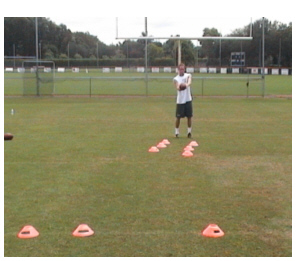 Make sure you start with their hips square to the line of scrimmage and outside foot pointing down the target line as described in the stance section. Step down the lane of cones or bags paying close attention to your shoulders, steps, and hips while punting down field towards your target.
Make sure you start with their hips square to the line of scrimmage and outside foot pointing down the target line as described in the stance section. Step down the lane of cones or bags paying close attention to your shoulders, steps, and hips while punting down field towards your target. 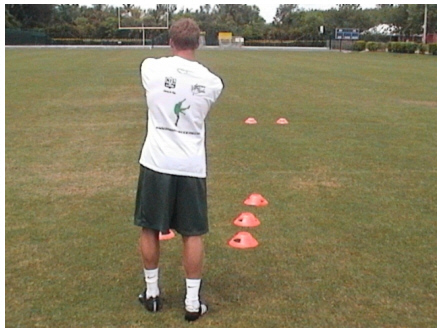
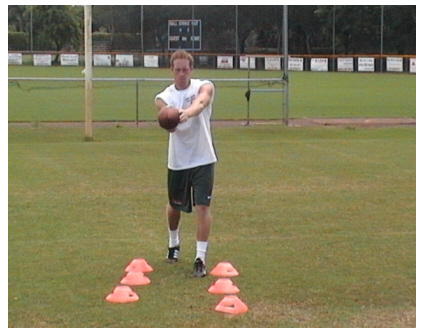
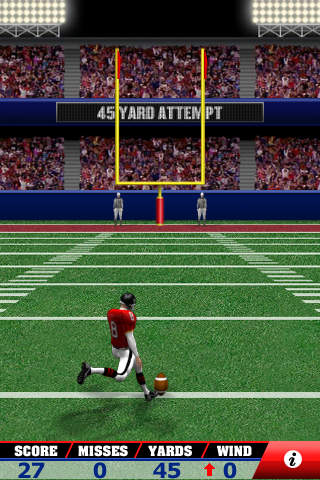
 Doug and Tommy's Frequently Asked Questions
Doug and Tommy's Frequently Asked Questions
